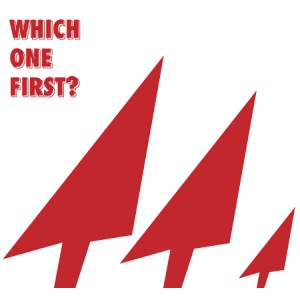 Joshua Porter wrote a great article about how one gauges which problems should be fixed first, on his co-written blog 52 Weeks of UX.
Joshua Porter wrote a great article about how one gauges which problems should be fixed first, on his co-written blog 52 Weeks of UX.
As a software UX designer — that’s “user experience designer” for those of us who don’t speak geek — Porter makes some great points in his article that could apply to working as a web designer/developer in a large organization.
These sort of web design jobs are challenging and I’ve found the most important rule to remember is that We can’t do everything.
But we can do a lot. And we can make websites better — and in the process increase the website’s usability and, more importantly, the effectiveness of our audience at accomplishing tasks that they set out to achieve when they visit the website.
But how do we do that?
While keeping in mind what Porter notes:
“Unfortunately, there are far more problems than there are designers to solve them. So how do you know you’re solving a problem that’s worth solving?”
Porter offers three questions that can guide a UX designer in their prioritization of problems:
- Are people frustrated (with the problem)?
- Are people actively trying to solve it?
- Are people already spending money (to solve the problem)?
To answer these questions, Porter suggests interviewing users (with a very familiar Five Ws technique and observing how they currently work to solve the problem at hand using the existing system.
In web development, it’s not this simple. We can analyze web traffic to determine a website’s most popular pages — and we can even trace the traffic patterns that users took to arrive at these pages. And we can certainly interview website stakeholders within the organization to determine how their needs are being met.
On the web it’s even harder to gauge what the problems are with an existing website because the audience typically consists of different populations with different needs. One section of the audience may not care one bit about completing any task other than the one they came to the website for. These different audiences can include, but are not limited to, the following, in absolutely no particular order:
- Current _____ (customers, residents, students, etc)
- Prospective _____ (customers, residents, students, etc)
- Stakeholders (employees, staff, faculty, elected officials, etc)
- The Media (sure, they’re likely at least one of the above, too, but they have special needs)
- Volunteers and Donors (if any, not quite stakeholders and as such, have special needs, too)
There may be more audiences depending on the website and its organizational purpose.
We know that, for most audiences, the longer it takes to complete a task on the website, the greater the frustration. When this frustration is multiplied by the frustration of the task at hand (doing something they have to do and not what they want to do; like paying money or filing paperwork), the poorly organized website experience sticks with them.
And we know some audiences actually don’t have tasks they want to complete. They are looking for general information — they are casually “surfing” — they are scouring for something intangible and unquantifiable: A feeling. So, OK, maybe they are looking to complete a task — but that task doesn’t have a result that can be quantified.
Sometimes, in an attempt to meet all of the needs of all of the audiences, the result is a disorganized mess that fails at satisfying the needs of anyone. We’ve all seen these kind of websites.
Making sense of this disorder — and preventing it from creeping back in — is really, what the job of a modern designer/developer is all about, and it’s as important as ensuring that the pixels are pretty.
And as Porter suggests, to succeed in solving problems for an audience, one needs to understand each distinct audience and create a rubric of questions to determine if those problems are worth solving.